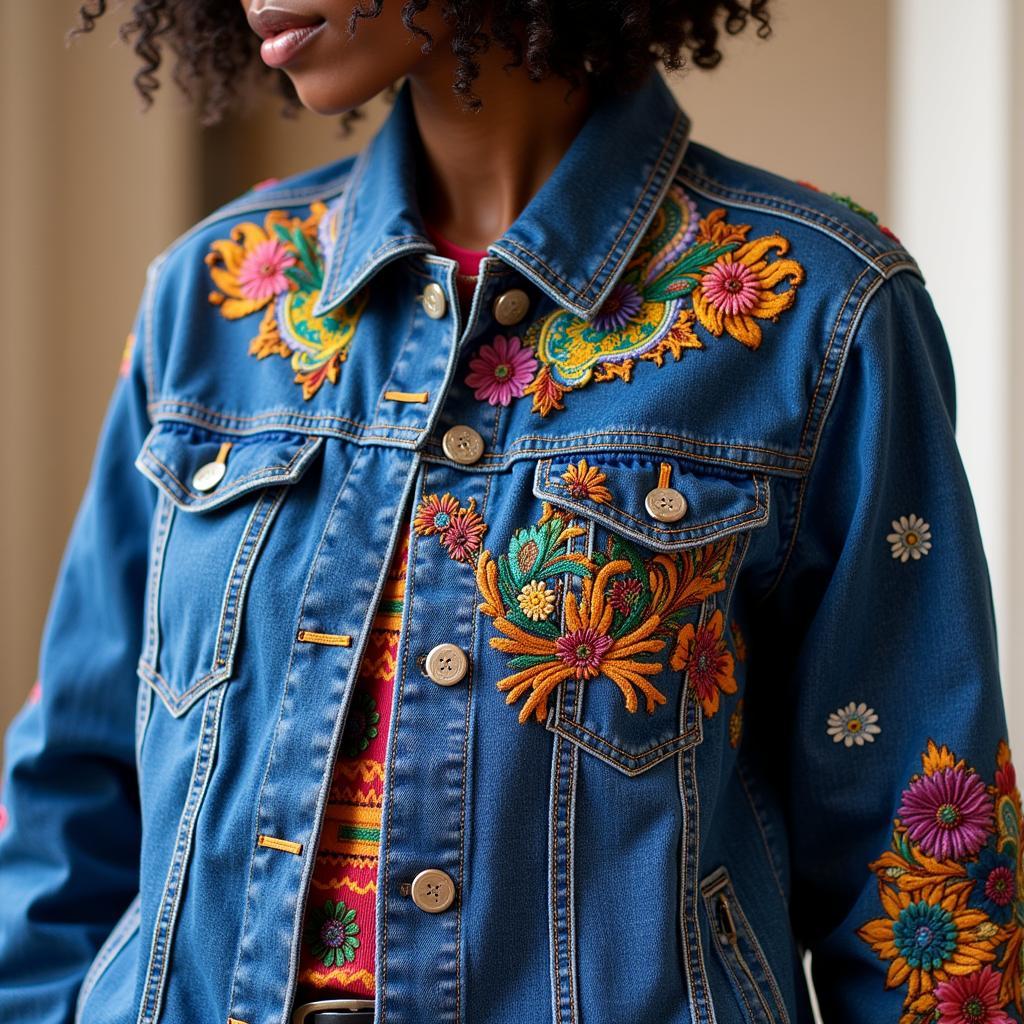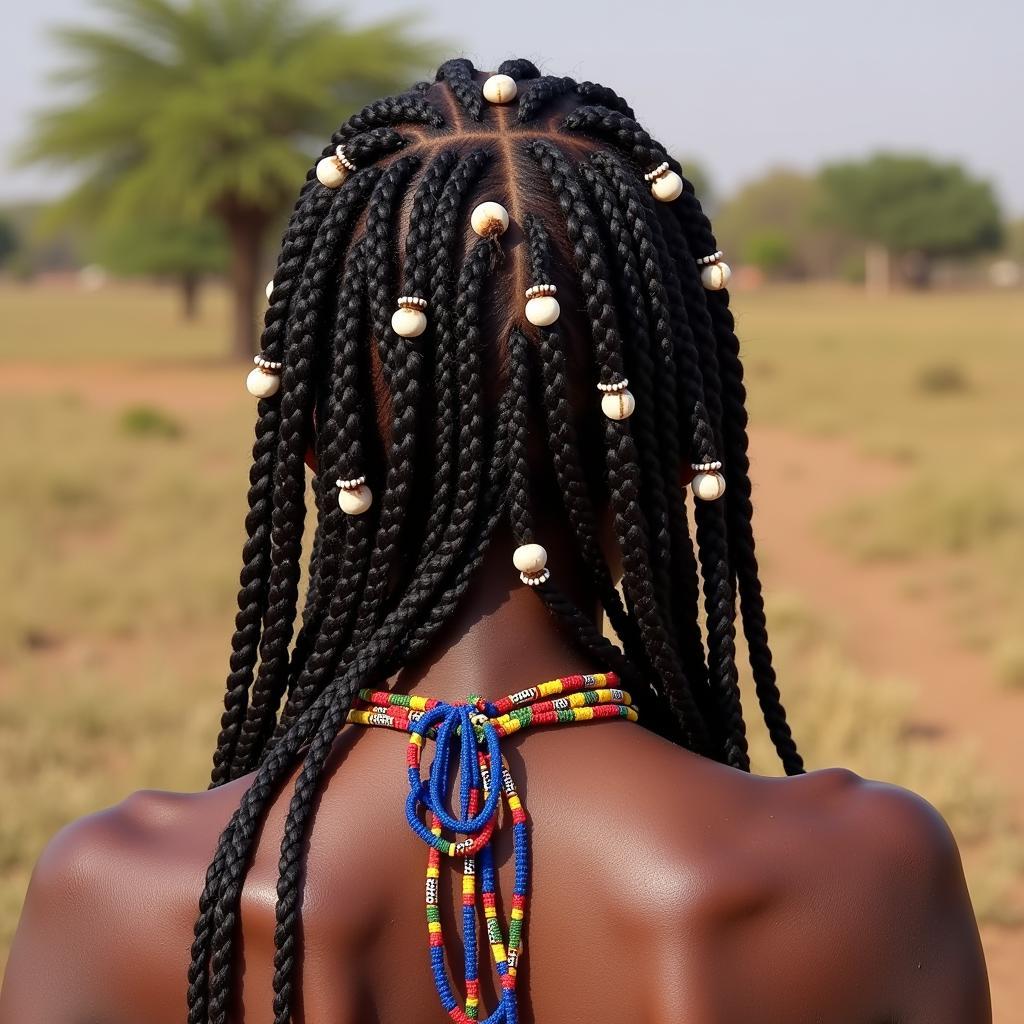Unveiling the Beauty of African Aesthetics
African Aesthetics, a diverse and captivating realm, reflects the continent’s rich history, vibrant cultures, and deep-rooted traditions. From intricate patterns and bold colors to rhythmic music and expressive dance forms, African aesthetics offer a unique perspective on beauty, form, and function. This exploration delves into the captivating world of African aesthetics, uncovering its diverse expressions and enduring impact.
The Essence of African Aesthetics
At the heart of African aesthetics lies a profound connection to nature, community, and spirituality. These elements intertwine to shape artistic expressions that are both visually stunning and deeply meaningful.
- Harmony with Nature: African art often draws inspiration from the natural world, incorporating organic shapes, animal motifs, and earthy textures. This connection reflects a deep respect for the environment and a belief in the interconnectedness of all living things.
- Celebrating Community: Many African art forms are created and enjoyed communally, reflecting the importance of social cohesion and collective identity. From intricate textiles woven by skilled artisans to energetic dances performed during festivals, art serves as a powerful tool for bringing people together.
- Spiritual Significance: African aesthetics are deeply rooted in spirituality and ancestral veneration. Artworks often serve as intermediaries between the physical and spiritual realms, embodying beliefs, rituals, and connections to the past.
Diverse Expressions of African Aesthetics
From the bustling markets of Marrakech to the serene landscapes of the Serengeti, African aesthetics manifest in a myriad of forms.
Visual Arts: A Tapestry of Colors and Patterns
African visual arts are renowned for their vibrant colors, bold patterns, and intricate details. These elements are evident in:
- Textiles: From the intricate kente cloth of Ghana to the vibrant bogolanfini mud cloth of Mali, African textiles showcase a mastery of weaving, dyeing, and embroidery techniques.
- Sculpture: Woodcarving holds a prominent place in African art, with sculptures ranging from stylized human figures to intricate masks used in ceremonies and rituals.
- Painting: African painting encompasses diverse styles, from the ancient rock art of the Sahara to contemporary works exploring social and political themes.
 African Masks and Sculptures
African Masks and Sculptures
Music and Dance: Rhythms of Life
African music and dance are inseparable expressions of joy, sorrow, celebration, and storytelling. They are characterized by:
- Polyrhythms: The use of multiple rhythms simultaneously creates complex and captivating musical textures.
- Call and Response: This interactive musical structure encourages participation and fosters a sense of community.
- Expressive Movements: African dance forms often involve elaborate costumes, intricate footwork, and gestures that convey specific meanings.
Fashion and Adornment: Statements of Identity
Clothing and adornment play a significant role in African aesthetics, serving as powerful expressions of identity, status, and cultural heritage.
- Textile Choice: The selection of specific fabrics, colors, and patterns often holds cultural or symbolic significance.
- Jewelry: From beaded necklaces to elaborate headdresses, jewelry serves as both adornment and a means of communicating social standing or personal beliefs.
- Body Art: Traditional practices like scarification and henna tattoos continue to hold cultural and aesthetic value in many African societies.
 African Fashion and Adornment
African Fashion and Adornment
The Enduring Legacy of African Aesthetics
African aesthetics have had a profound impact on art and design movements around the world.
- Modern Art: Artists like Pablo Picasso and Henri Matisse drew inspiration from African masks and sculptures, incorporating elements of abstraction, simplification, and geometric forms into their work.
- Fashion and Design: African-inspired prints, patterns, and textiles continue to influence contemporary fashion and interior design trends.
- Music and Dance: African rhythms and musical structures have shaped genres like jazz, blues, and hip-hop, while African dance forms continue to inspire choreographers and dancers worldwide.
Conclusion
African aesthetics offer a captivating journey into the continent’s rich cultural tapestry. From the vibrant colors and intricate patterns to the rhythmic music and expressive dance forms, African aesthetics captivate the senses and nourish the soul. By embracing the diversity, creativity, and profound meaning embedded within African art forms, we gain a deeper appreciation for the beauty and wisdom of African cultures.
FAQs
(This section can be expanded with 5-7 relevant questions and concise answers.)
Do you need assistance with understanding African aesthetics further? Our team is available 24/7 to answer your questions. Contact us at +255768904061, [email protected], or visit our office at Mbarali DC Mawindi, Kangaga, Tanzania.



